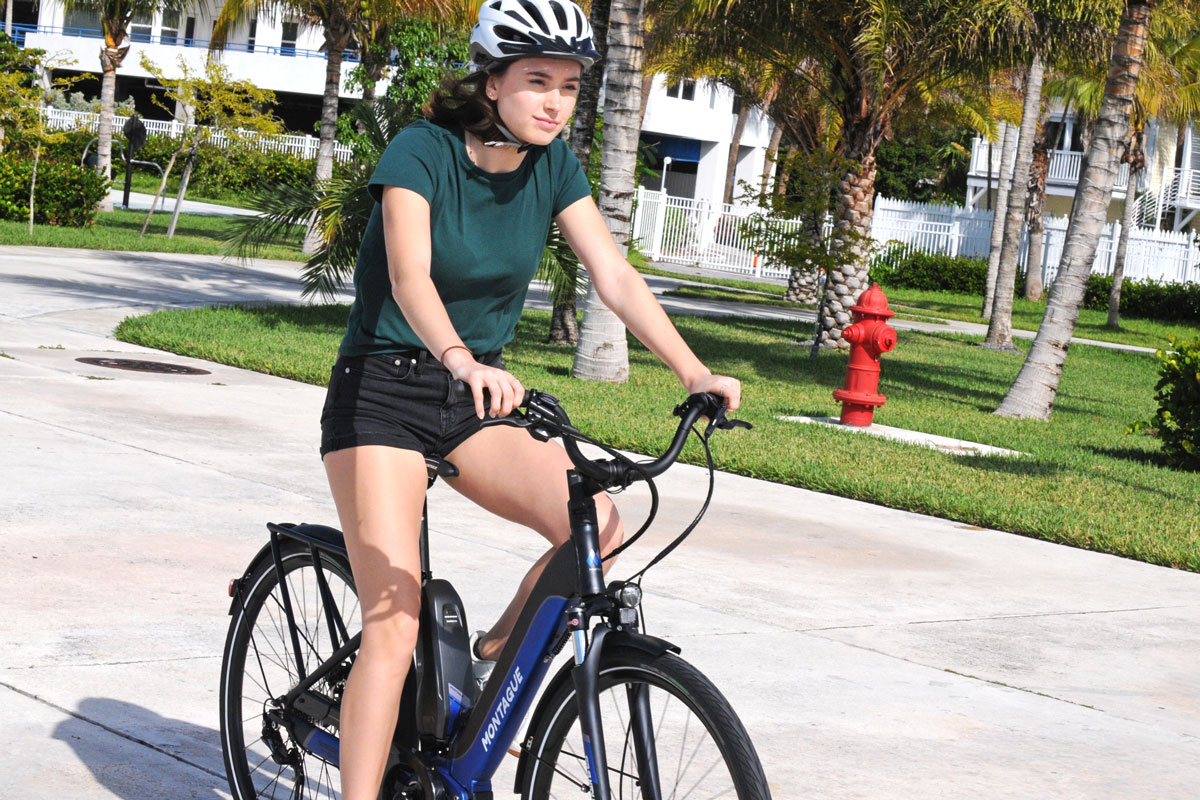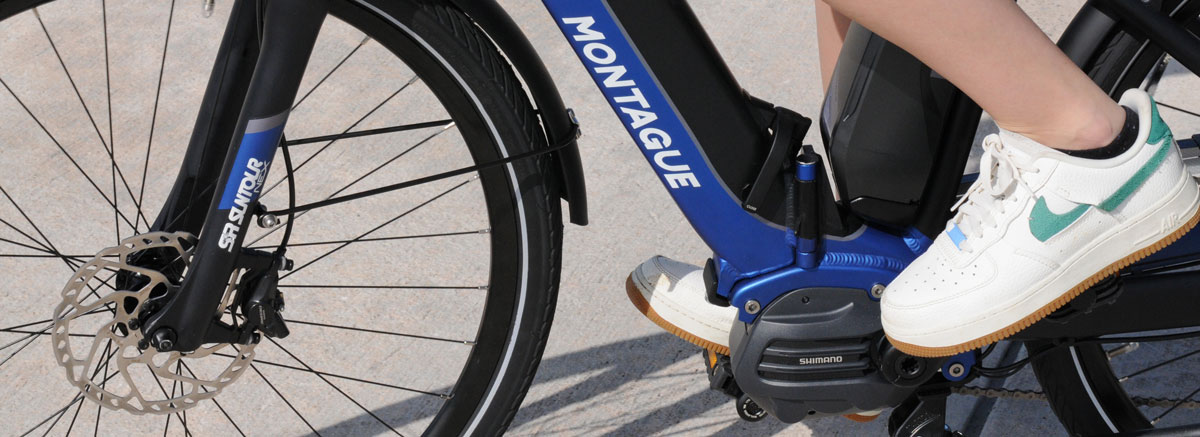The Basics
Electric bikes, or “e-bikes”, provide assistance to riders using power from a motor and battery. Compared to conventional bikes, e-bikes allow you to you ride farther, faster, and with relative ease. The added range and electric-assist can help replace car trips, ease commutes to work or school, and bridge the gap between public transit and your home or next destination.
But does this electric assist change how you ride?
E-bikes can come equipped with a variety of drivetrain systems. Some provide assist when you pedal (like the Montague M-E1), some have a throttle, and top speed and acceleration can vary from model to model. What almost all e-bikes have in common is increased acceleration, speed, and weight compared to a conventional bike. This does change how the bike handles and therefore, changes how you ride.
E-Bike Riding Tips
Braking
Due to the increased weight and speed of an e-bike, the brakes can respond differently than on a conventional bike. Slowing down and stopping on an e-bike requires practice and care.
With higher speeds, braking may require more distance to stop, so begin braking preemptively and keep an eye out for upcoming obstacles, stop signs, or traffic lights that might change. Pay attention to road conditions as sand, leaves, rain or other materials on the road may impact your ability to brake quickly.
These are also great tips to observe when riding a conventional bike, but with the higher speeds of an e-bike, staying extra alert will provide more reaction time when braking.
Handling
The speed and acceleration of an e-bike affects more than just braking, including the way you corner, anticipate obstacles, and interact with other road users.
-
-
- Pay attention to your speed going into a corner and be sure to stop pedaling before entering the corner. Otherwise, you may carry too much speed when entering a corner and/or experience pedal strike where the pedal hits the ground due to the angle of the bike when cornering.
- Due to the greater acceleration of an e-bike, you should also pay particular attention to the terrain as you may approach obstacles faster than expected.
- Always keep both hands on the handlebars when riding an e-bike. It’s tempting to try the “no-handed” ride you perfected as a kid, but with a heavier and faster e-bike, it’s more important to maintain control at all times.
-
Other road users such as drivers, pedestrians and other cyclists may need to adjust to the higher speed of the e-bike and may not be aware of you. It is your responsibility to anticipate and react to avoid accidents.
Always ride your e-bike under control and at a safe speed. Be aware of all other users of the road such as pedestrians, other cyclists, motorcycle, scooter, automobile and truck drivers and animals. Note that they may not see you due to their line of sight, or be expecting and able to react to the increased speed of the e-bike depending on the weight and type of vehicle. If drivers or pedestrians are used to cyclists approaching them at a certain speed, they may enter your path without leaving appropriate time to clear the way, so be vigilant when riding near other road users.
Visibility
Since e-bikes have a battery on board to power the drive system, that power source is typically also used for built-in front and rear lights. That provides some inherent visibility compared to a traditional bike, but you should still be especially cautious while riding at night. Wear high visibility garments, consider extra reflectors or lights, and reduce speed when approaching other road users to ensure they see you.
Component Wear
E-bikes also exert greater forces on many of their components during normal use. While electric bikes are typically equipped with more robust parts than a conventional bike, some parts can wear faster when subjected to these greater forces. Keep a close eye on the parts that typically need periodic replacement on a bicycle.
-
-
- The increased braking required for e-bikes can increase wear on the brakes. Check the brake pads regularly and replace them when necessary.
- Check the chain for signs of wear, chain stretch, or broken links. Reduce pedal force before initiating a gear shift to reduce drivetrain wear.
- If the chain needs replacing, check the teeth on the chainrings and rear cogs. These parts often wear in tandem with the chain and will no longer fit perfectly with a new chain. It’s often necessary to replace chainrings and cogs when the chain is replaced.
- Check tires for wear.
- Shift gears regularly to stay in an optimal cadence range and downshift before coming to a stop. With the added torque from the motor making acceleration feel easy, you might be tempted to shift less (or not at all) when riding an e-bike. However, it’s important to still change from higher gears to lower gears for stopping and starting in order to reduce torque and wear on the drivetrain.
-



